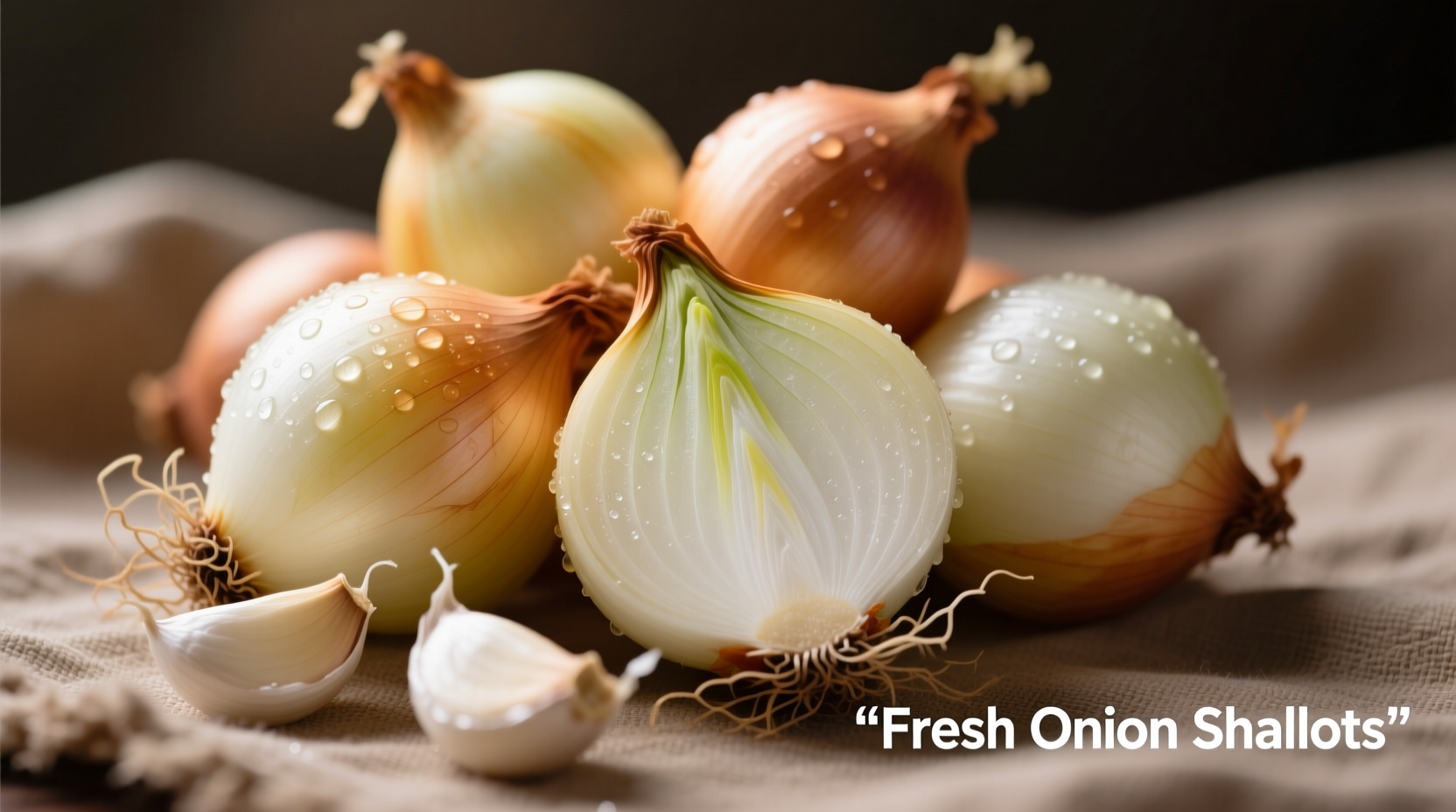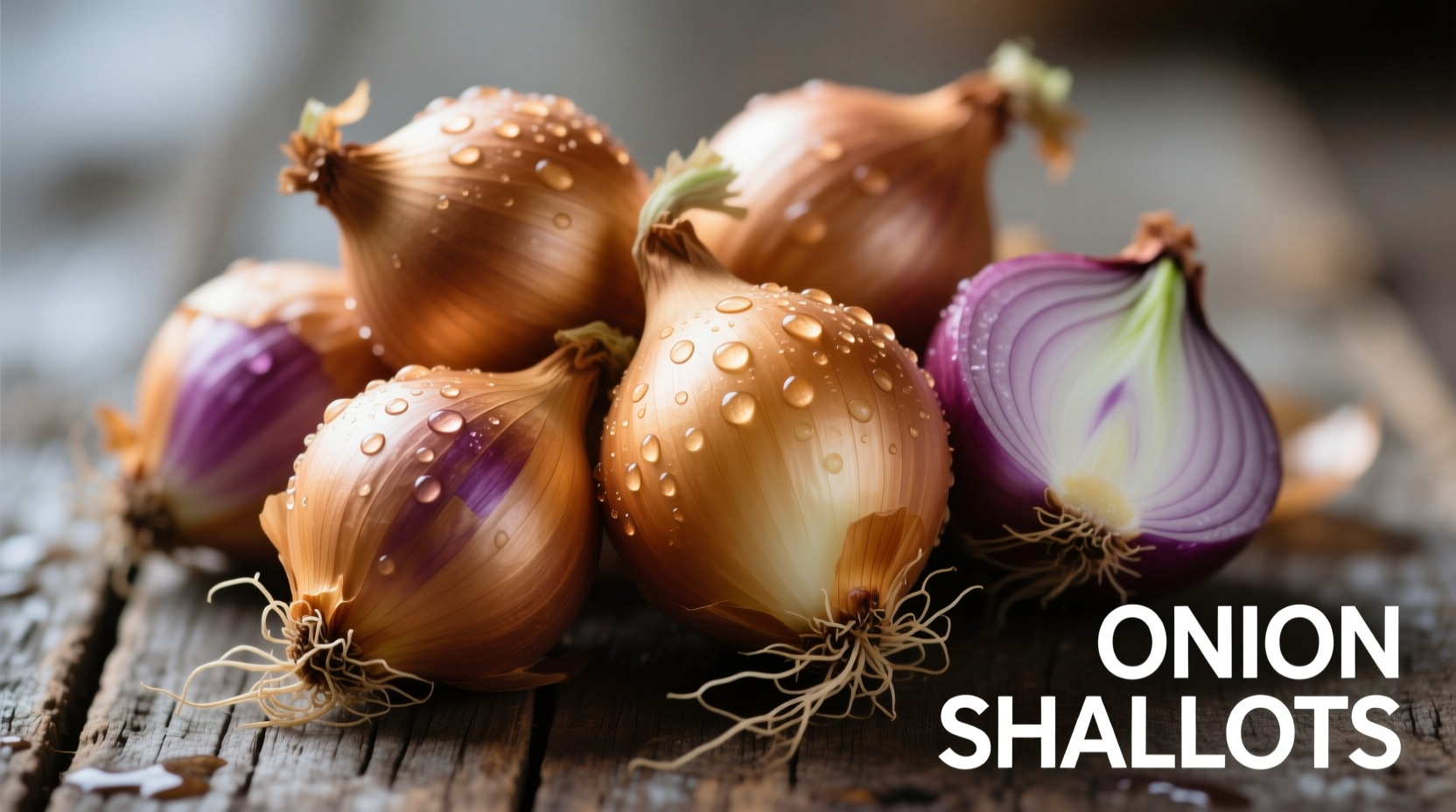Discover why culinary professionals reach for onion shallots when creating refined dishes. This comprehensive guide reveals exactly how these versatile alliums can transform your cooking with their unique flavor profile and culinary advantages.
What Exactly Are Onion Shallots?
Onion shallots (Allium cepa var. aggregatum) represent a distinct variety within the allium family, separate from both common onions and true shallots. These small, teardrop-shaped bulbs grow in clusters rather than as single bulbs like yellow onions. Their coppery-brown skin conceals off-white to pale purple flesh arranged in cloves similar to garlic.
Unlike their pungent cousins, onion shallots contain higher sugar content and lower pyruvic acid levels, resulting in a milder, more complex flavor that sweetens beautifully when cooked. This chemical composition makes them ideal for applications where regular onions would create unwanted bitterness or sharpness.

Onion Shallots vs. Common Onions: Key Differences
| Characteristic | Onion Shallots | Yellow Onions |
|---|---|---|
| Flavor Profile | Sweet with subtle garlic notes, mild heat | Sharp, pungent, more intense heat |
| Water Content | Lower (65-70%) | Higher (85-90%) |
| Sugar Content | Higher (8-10%) | Lower (4-6%) |
| Cooking Behavior | Smooth texture, no stringiness | Can become stringy when cooked |
| Best Culinary Uses | Vinaigrettes, sauces, delicate dishes | Soups, stews, roasting |
Where to Find and How to Select Quality Onion Shallots
Locating genuine onion shallots requires knowing what to look for. They typically appear in specialty grocery stores, farmers' markets, and well-stocked supermarkets from late summer through early spring. When selecting, choose firm bulbs with dry, intact skin—avoid any with soft spots, sprouting, or damp areas which indicate spoilage.
According to the USDA Agricultural Marketing Service, peak season for onion shallots runs from August to March, with the highest quality available from October through February. During this period, their flavor reaches optimal sweetness and complexity.
Proper Storage Techniques for Maximum Freshness
Unlike regular onions that tolerate refrigeration poorly, onion shallots benefit from specific storage conditions. Keep them in a cool, dark, well-ventilated space at 45-55°F (7-13°C) with 65-70% humidity. A mesh bag in your pantry typically provides ideal conditions. Properly stored, they'll maintain quality for 2-3 months.
Refrigeration should be reserved for cut shallots, which should be stored in an airtight container for up to 7 days. Freezing chopped shallots preserves them for up to 6 months, though texture changes make them suitable only for cooked applications.
Culinary Applications: When and How to Use Onion Shallots
Understanding the context boundaries for onion shallots ensures optimal results in your cooking. Their delicate flavor shines in applications where regular onions would overwhelm:
- Vinaigrettes and cold sauces: Raw onion shallots mellow beautifully in acidic environments without becoming harsh
- Creamy sauces: Their lower water content prevents sauces from breaking
- Delicate proteins: Fish, chicken, and veal benefit from their subtle flavor
- Caramelized preparations: Develop complex sweetness without bitterness
For raw applications, use a 1:1 ratio with regular onions. When cooking, substitute 3 shallots for 1 medium yellow onion. Remember that their smaller size means more precise measurement—chefs typically use the "count method" rather than volume measurements for accuracy.
Substitution Guidance When Onion Shallots Aren't Available
While nothing replicates the exact flavor profile of onion shallots, strategic substitutions can save your recipe:
- Best substitute: 1 small yellow onion + 1 minced garlic clove (use 25% less onion)
- For raw applications: Sweet white onions with a splash of rice vinegar
- For cooked dishes: Pearl onions or sweet Vidalia onions
- Avoid substituting: Red onions (too acidic) or scallions (wrong texture)
Research from the Culinary Institute of America demonstrates that substituting yellow onions without adjustment increases pyruvic acid content by 40-60%, significantly altering the final dish's flavor balance.
Signature Dishes Featuring Onion Shallots
Chefs worldwide rely on onion shallots for specific culinary applications where their unique properties shine:
- Classic French sauces: Beurre blanc and hollandaise achieve perfect emulsion stability
- Asian stir-fries: Thai and Vietnamese dishes use them for subtle background notes
- Modern gastropub fare: Shallot confit elevates burgers and sandwiches
- Artisanal condiments: Essential in high-end ketchups and mustards
Their historical use dates back to ancient Egypt, but French cuisine elevated them to prominence during the 17th century. Today, professional kitchens maintain a constant supply for their versatility across culinary traditions.











 浙公网安备
33010002000092号
浙公网安备
33010002000092号 浙B2-20120091-4
浙B2-20120091-4